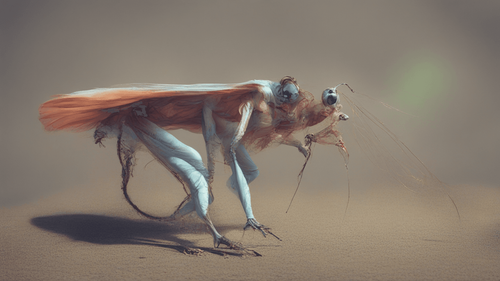
## Introduction
In the ever-evolving landscape of artificial intelligence (AI), one groundbreaking innovation has captured the imagination of creators, designers, and industries alike: AI which generates images. This remarkable technology has emerged as a powerful tool that not only revolutionizes creative content creation but also reshapes entire industries. In this comprehensive article, we delve into the captivating realm of AI-generated images, exploring its capabilities, applications, and the transformative impact it has on the way we approach visual content.
AI Which Generates Images: Redefining Creativity
The convergence of AI and creativity has given rise to a phenomenon that challenges conventional notions of artistic creation. With the advent of AI which generates images, we witness a paradigm shift in how images are conceptualized and produced. This technology harnesses the prowess of deep learning algorithms to synthesize images that range from hyper-realistic to surreal and abstract, pushing the boundaries of human imagination.
The Inner Workings of AI-Generated Images
At the core of AI-generated images lies a complex interplay of neural networks, data analysis, and pattern recognition. Generative Adversarial Networks (GANs), a type of AI architecture, take center stage in this process. GANs consist of two neural networks—the generator and the discriminator—locked in a creative duel. The generator crafts images from scratch, while the discriminator evaluates them for authenticity. Through continuous refinement, GANs produce images that can often deceive even the keenest human observer.
Applications of AI-Generated Images: Unleashing Possibilities
The applications of AI-generated images span a diverse spectrum, transcending various domains and industries. From art and design to marketing and healthcare, the impact of this technology is far-reaching and transformative.
Art and Design: A New Era of Creativity
In the realm of art and design, AI-generated images serve as both a canvas and a muse. Artists and designers collaborate with AI algorithms to birth innovative visual masterpieces. This collaborative interplay between human creativity and AI ingenuity yields astonishing results, as evidenced by the emergence of AI-generated artworks displayed in prestigious galleries worldwide.
Marketing and Advertising: Engaging Visual Campaigns
Marketing and advertising have embraced AI-generated images as a potent tool for crafting captivating visual campaigns. Brands leverage AI to design compelling advertisements, tailored to resonate with their target audiences. The ability of AI to analyze consumer preferences and trends ensures that the generated images align with market demands, maximizing engagement and impact.
Fashion and Apparel: Redefining Style Trends
The fashion industry undergoes a revolution with AI-generated images driving the creation of avant-garde style trends. Designers collaborate with AI algorithms to conceptualize unique clothing lines, pushing the boundaries of fashion innovation. AI's capability to swiftly iterate through design variations accelerates the creative process, enabling designers to bring their visions to life with unparalleled efficiency.
Healthcare and Medical Imaging: Precision Diagnostics
AI-generated images extend their transformative influence to the field of healthcare and medical imaging. Radiologists and medical professionals harness AI's analytical prowess to enhance diagnostic accuracy. AI-generated medical images aid in identifying anomalies, assisting in the early detection of diseases and contributing to more effective treatment plans.
Challenges and Ethical Considerations
While AI-generated images hold immense promise, they also pose significant challenges and ethical considerations. The rapid evolution of this technology necessitates a nuanced approach to its development and deployment.
Bias and Fairness: Navigating Prejudice in Algorithms
AI-generated images, like all AI technologies, are susceptible to bias and prejudice present in the training data. Ensuring fairness and mitigating bias in AI algorithms is a paramount concern. Developers and researchers are actively working to implement safeguards that promote equity and inclusivity in AI-generated content.
Intellectual Property and Creativity
The realm of intellectual property faces new complexities with the rise of AI-generated images. Determining ownership and authorship of content generated collaboratively by humans and AI requires legal frameworks that align with the evolving landscape of creativity.
Misuse and Misrepresentation
As AI-generated images become increasingly sophisticated, concerns arise regarding their potential for misuse and misrepresentation. The ability to fabricate hyper-realistic images raises questions about the veracity of visual information and its potential impact on public discourse and trust.
FAQs
AI which generates images? AI which generates images refers to the use of artificial intelligence, particularly generative algorithms like GANs, to create visual content. These algorithms analyze and mimic patterns in existing data to produce new and original images.
How does AI-generated art impact the traditional art world? AI-generated art challenges traditional notions of authorship and creativity. It sparks debates about the role of human artists and the evolving definition of artistic expression.
Can AI-generated images replace human designers? AI-generated images complement human designers by accelerating the creative process and offering novel insights. However, the unique human perspective and emotional depth in design remain irreplaceable.
What are the ethical concerns surrounding AI-generated images? Ethical concerns include bias in algorithms, intellectual property rights, and the potential for misleading or malicious use of AI-generated images. Addressing these concerns requires interdisciplinary collaboration and ethical guidelines.
Is AI-generated medical imaging reliable for diagnosis? AI-generated medical images show promise in aiding diagnosis by providing additional insights to medical professionals. However, they should be used as a complementary tool alongside traditional diagnostic methods.
How can industries harness the potential of AI-generated images? Industries can harness AI-generated images by integrating them into their creative processes, marketing campaigns, and diagnostic procedures. Collaborative efforts between humans and AI can lead to innovative breakthroughs.
Conclusion
In the dynamic landscape of technological innovation, AI which generates images stands as a testament to human ingenuity and the boundless potential of AI. This revolutionary technology not only redefines creativity but also shapes industries across the spectrum. As we navigate the challenges and ethical considerations that accompany this transformative journey, one thing remains certain: AI-generated images are reshaping the way we envision, create, and interact with visual content, ushering in a new era of limitless artistic exploration and innovation.